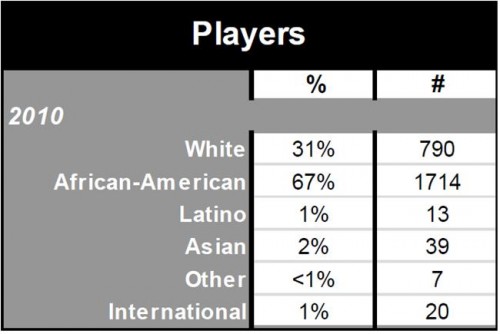Cross-posted at Jezebel.
In 2009 R&B singer Chris Brown pled guilty to assaulting singer Rihanna. At the time of the incident, photographs of her bruised and swollen face were passed all over the internet. This week we learned that Brown has tattooed the face of a battered woman on a very public part of his body, his neck.
I was particularly impressed by Amanda Marcotte’s analysis of his decision, sent in by Tom Megginson. I encourage you to read it at Pandagon, but I’ll also summarize here.
People, Marcotte begins, are “… scrambling to claim that Brown’s tattoo is somehow not what it seems. But it is what it seems.”
What it is, she contends, is a way of bragging about the beating.
Men who beat and rape women want to feel powerful. They want to feel manly. And because hitting women and raping women makes them feel these things, they want to brag about it… A tattoo commemorating beating down your girlfriend is a trophy.
A desire to brag is the reaction of violent men — instead of, say, shame — because they don’t feel ashamed. Citing research by psychologist David Lisak, who found that certain men will happily tell stories about successful sexual assaults, Marcotte argues that batterers and rapists are proud of what they’ve done because they believe that they are right.
[Many perpetrators] are defiant. They believe they are entitled to dominate women, and they feel victimized by a world that doesn’t give them what they believe is theirs. They act out, looking for little ways to assert the right to dominate they believe is theirs.
Because they believe that they are in the right, they aren’t troubled by other people’s outrage. Marcotte again:
…telling others about it and watching them recoil basically means reliving the power trip… Not only did they dominate the victim, but they have provoked anger and disgust in you, and that makes them feel powerful all over again.
As a further example, she includes a two-minute clip of TV evangelist Pat Robertson recommending, gleefully, that a man beat his wife into submission:
Robertson’s advice here is plain: Women should be subordinate to their husbands and, if they are not, husbands have a right to beat them into subordination. Husbands can get together and chuckle about this; getting women into line is a good thing, not a bad thing. Actor Sean Connery — and many other people — agree that it’s “absolutely right” to slap a woman. It’s part of being a real man. Those men who might object to your treatment of women? They’re pathetic and weak and upsetting them makes us laugh.
In sum, while it might be hard to believe, I think Marcotte’s analysis here is right on. The tattoo — especially on such an exposed and public part of the body — is a giant “fuck you” to everyone who thinks he shouldn’t have beaten Rihanna. It seems that way and “it is what it seems.”
Lisa Wade, PhD is an Associate Professor at Tulane University. She is the author of American Hookup, a book about college sexual culture; a textbook about gender; and a forthcoming introductory text: Terrible Magnificent Sociology. You can follow her on Twitter and Instagram.














